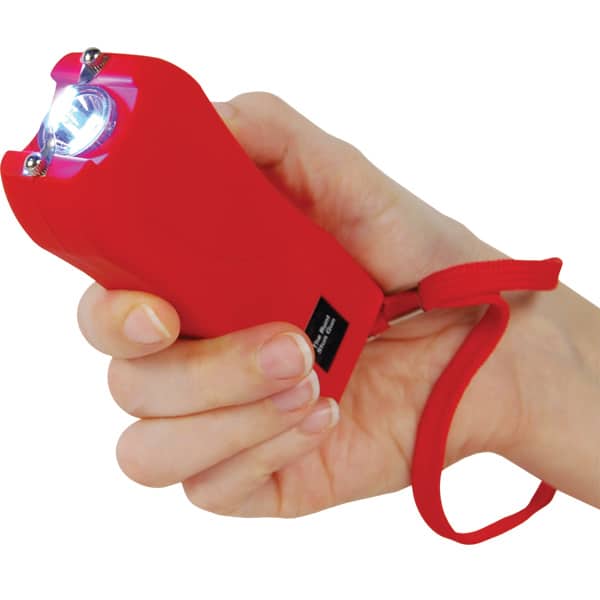
Brainstorm Security Shop

For Orders Over $99

On Any Of Our Products

Details On Refund Page
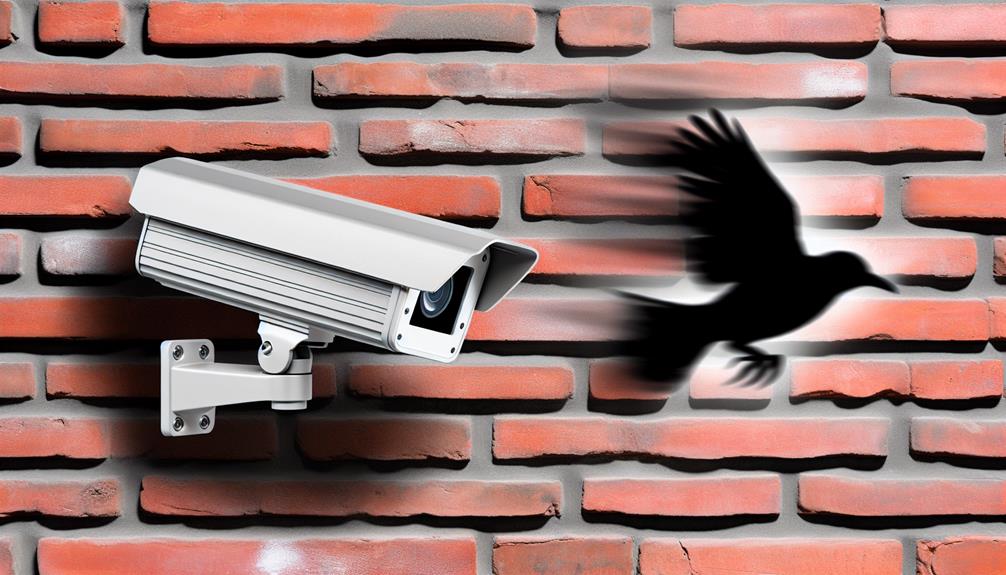
You’ve likely noticed how security needs have evolved, pushing the demand for more sophisticated surveillance technology. High-resolution motion detection cameras play a pivotal role in this landscape, offering you unparalleled clarity and precision. These tools aren’t just about capturing clearer images; they’re about making smarter security decisions. With their ability to distinguish subtle movements and adapt to different lighting conditions, the implications for your safety strategy are profound. But how exactly do these cameras integrate with existing systems, and what should you consider before upgrading? Let’s explore the potential shifts in your security approach that these advanced devices could necessitate.
Motion detection technology relies on sensors to pick up movement within a designated area, alerting you when activity occurs. This system is crucial for home security, energy efficiency, and automated settings in various devices. As you dive deeper, you’ll find that the core of this technology hinges on motion detection algorithms and sensor technology advancements.
Each year, these algorithms become more sophisticated, enabling the sensors to differentiate between general movements, like a tree swaying, and specific patterns, such as a person approaching your door. This precision reduces false alarms and enhances security measures. The latest sensors incorporate a blend of infrared and microwave technology to increase accuracy and reliability.
Additionally, advancements in sensor technology have led to smaller, more efficient devices. These aren’t only easier to install but also blend seamlessly into your home’s decor, maintaining aesthetic without sacrificing functionality. You’ll appreciate that these improvements mean your system uses less power and has a longer lifespan, saving you money in the long run.
As technology evolves, so does the capability of motion detection systems. They’re becoming an integral part of smart home setups, ensuring that you’re not just informed but also proactive about your safety and energy usage.
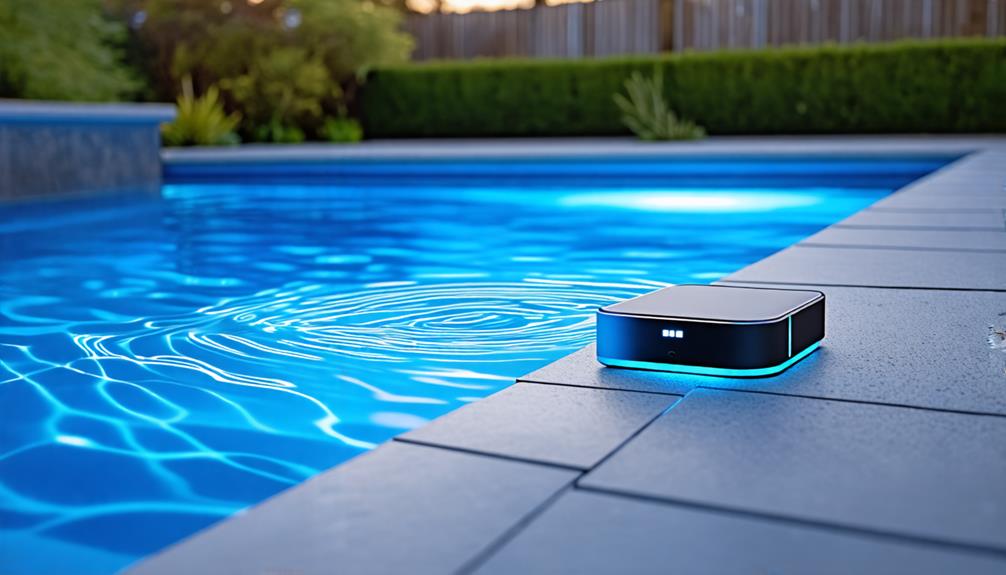
As technology in motion detection systems advances, the role of high-resolution cameras becomes increasingly significant. You’ll find that these cameras are packed with features that enhance both performance and usability.
Let’s dive into some of the key features you should be aware of:
Beyond these, features like image stabilization help reduce blurriness in video feeds, enhancing the camera’s effectiveness in active environments.
User interfaces are becoming more intuitive, making it easier for you to configure and operate your systems. Connectivity options range from Wi-Fi to wired Ethernet, providing flexibility in how you integrate the camera with other systems.
Additionally, innovative storage solutions, versatile power sources, and various mounting options adapt these cameras to different operational needs.
Whether you’re setting up a new system or upgrading an existing one, these features collectively ensure a robust and reliable surveillance setup.
With enhanced image quality, you’ll notice a significant improvement in security monitoring.
You can spot and analyze incidents with greater accuracy, ensuring nothing slips through the cracks.
This clarity not only boosts effectiveness but also streamlines your surveillance process.

High resolution motion detection cameras significantly enhance the effectiveness of security monitoring by providing clearer, more detailed images. You’ll notice a drastic improvement in your ability to identify and react to security events, thanks to these advanced cameras.
Here’s how they can benefit you:
These benefits come with responsibilities such as understanding privacy implications, adhering to surveillance ethics, and ensuring proper data storage.
You’ll also need to stay compliant with regulations, conduct regular system maintenance, and train users effectively. Managing these elements ensures that your investment in high resolution cameras pays off, securing your premises while upholding ethical standards.
Enhanced image quality from high resolution motion detection cameras sharpens your ability to analyze incidents accurately. With clearer images, you’re not just seeing what’s happening; you’re gaining a deeper understanding of each event. This precision is crucial not only for immediate responses but also for later reviews and investigations.
Higher resolution means more detail, and more detail means fewer uncertainties when you’re piecing together the sequence of an incident. You can spot subtle movements and distinguish between similar-looking objects or people, which can be critical in complex scenarios. This clarity impacts your incident response strategies by providing reliable data that can guide decision-making processes effectively.
Moreover, when it comes to preserving video evidence, high-quality footage is invaluable. It withstands scrutiny during legal examinations and maintains its integrity over time, ensuring that crucial moments aren’t lost to pixelation or poor lighting.
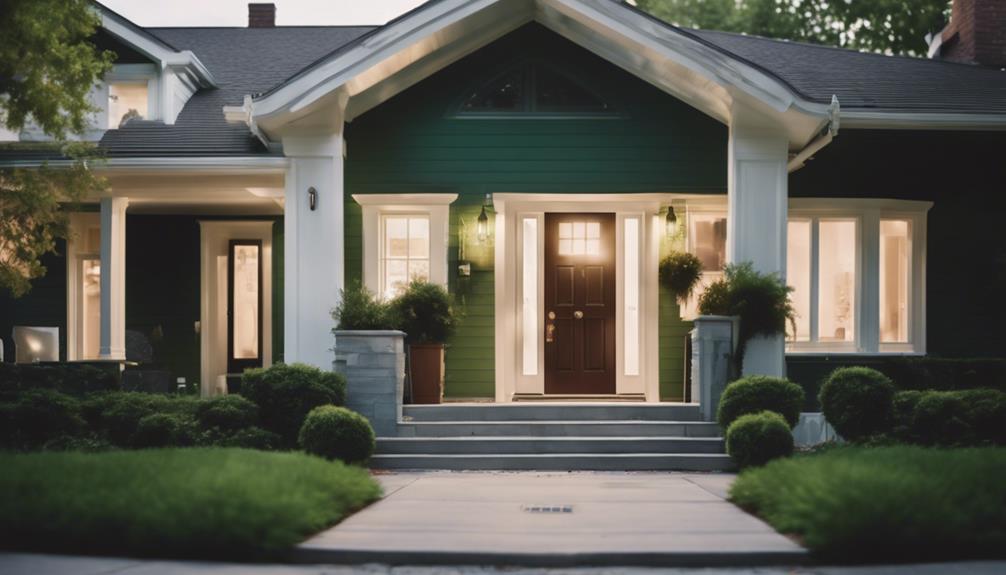
To ensure your high-resolution motion detection cameras function at their best, start by selecting the ideal location for installation. You’ll want to maximize coverage while minimizing obstructions and vulnerability to tampering. Here are key considerations to bear in mind:
Furthermore, lens selection should match the intended use—wider lenses for larger areas and more detailed ones for high-risk zones.
Regular maintenance routines are essential to keep the system efficient, including cleaning lenses and checking connections.
Lastly, don’t skimp on network security; it’s vital to protect the footage from unauthorized access. Proper user training and straightforward software setup will ensure ease of use and effective monitoring.
As you compare various camera models, you’ll want to consider sensor quality, which greatly impacts image clarity.
Additionally, assess each model’s night vision capabilities to ensure it meets your needs in low-light conditions.
Delving into sensor quality across various high-resolution motion detection cameras reveals significant differences that impact performance.
As you explore options, you’ll notice that sensor performance isn’t just about higher megapixels. It’s about how well the camera uses its resolution to detect precise motions without false triggers.
Here’s what you should consider when comparing camera sensors:
Don’t be swayed by just the highest resolution or megapixel count. Instead, focus on how effectively the camera uses its sensor capabilities to deliver crisp, clear motion detection.
High sensor quality means better discrimination of relevant movements, ensuring you’re alerted only when it matters.
When comparing night vision capabilities across different high-resolution motion detection cameras, it’s essential to focus on several key aspects that influence their effectiveness in low-light conditions.
You’ll need to consider the type of image sensors used, as they play a crucial role in how well the camera captures images without natural light. Typically, cameras equipped with larger sensors and higher sensitivity to light perform better in dim environments.
Another critical factor is the presence of infrared (IR) technology. Cameras that incorporate advanced IR features can detect and illuminate the scene with IR light, which is invisible to the naked eye but crucial for clear night vision.
You should look for models that offer adjustable IR settings to optimize night-time performance based on specific conditions.
Additionally, the lens quality and aperture size significantly affect the camera’s ability to gather light. A wider aperture lets more light into the sensor, enhancing the night vision quality.
It’s also worth noting the software algorithms used by cameras to process images in low light. Advanced noise reduction techniques and the ability to balance contrast can greatly improve the clarity and detail of night vision footage.
When you’re evaluating options, make sure these features are robust enough to meet your needs.
After exploring the technical features that enhance night vision, let’s examine how these impact the overall cost and value of various high-resolution motion detection cameras.
You’ll find that the more advanced the night vision, typically the higher the price. However, it’s crucial to determine whether the extra cost truly translates to better value for your specific needs.
When conducting a price comparison and value assessment, consider these factors:
How can high resolution motion detection cameras enhance your existing security setup? By integrating these cameras into your system, you’re not just adding another layer of security; you’re significantly upgrading your entire network’s efficiency and responsiveness.
System compatibility is crucial; these cameras should seamlessly mesh with your current setup to avoid any integration challenges.
The user interface plays a pivotal role here. It should be intuitive, allowing you to manage data effectively and navigate easily through various features. Effective data management ensures that all video footage is cataloged and accessible, while alarm synchronization helps in aligning your cameras with other security systems to trigger coordinated responses to incidents.
Moreover, with cloud storage capabilities, you can store vast amounts of video data securely online, making it accessible from anywhere. This ties into the advantage of real-time alerts and mobile access, which allow you to receive immediate updates and live feed directly on your mobile device, facilitating quick decision-making and remote monitoring.
Lastly, consider the installation requirements. Ensure your infrastructure can support these advanced cameras without extensive modifications. Proper installation ensures optimal functioning and longevity of your upgraded security system.
In light of the benefits that high resolution motion detection cameras bring to your security system, it’s crucial to consider the potential costs and budget requirements.
You’ll need to balance the initial outlay with ongoing expenses, ensuring that you’re investing wisely in your security infrastructure.
Effective budget forecasting is key. Start by estimating the total cost of ownership, which includes purchase, installation, and maintenance.
Here’s what you should consider:
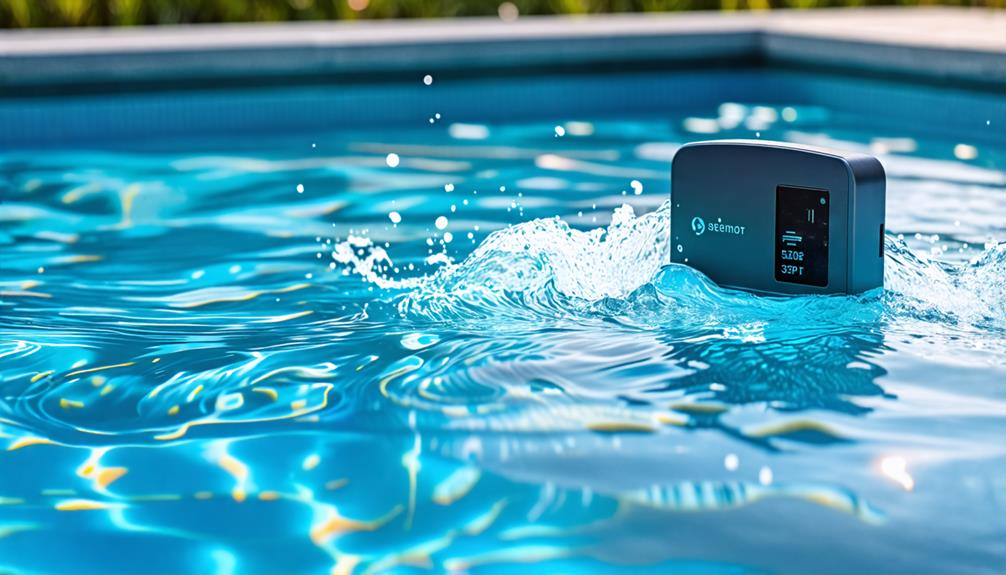
Implementing cost saving strategies can stretch your dollar further.
Opt for cameras that offer both high quality and energy efficiency, and don’t overlook potential tax incentives for security investments.
Plan wisely, and you’ll ensure that your security upgrades are both effective and economical.
You’ll find that high-resolution motion detection cameras are crucial in diverse settings.
From curbing urban crime to tracking wildlife and enhancing industrial safety, these tools have proven indispensable.
Let’s explore how these cameras have been effectively deployed in these varied scenarios.
Several cities have successfully integrated high-resolution motion detection cameras into their urban crime prevention strategies. You might wonder how these advanced tools actually contribute to safer urban environments. Well, let’s dive into some real-world applications that highlight their effectiveness.
You’ll see that integrating these cameras isn’t just about watching over the streets; it’s about creating a collaborative effort between technology and community to foster a safer urban environment.
Isn’t it impressive how a piece of technology can make such a big difference in community safety?
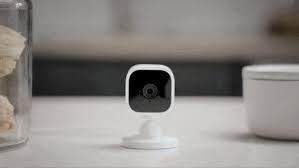
Transitioning from urban settings to the wild, high-resolution motion detection cameras also play a crucial role in wildlife monitoring. As you explore the applications of these cameras in natural habitats, you’ll find that their utility in wildlife tracking is immense.
Let’s take a deep dive into some effective deployment case studies that highlight the strategic use of these cameras.
In the vast forests of the Pacific Northwest, researchers have strategically placed high-resolution cameras to monitor the elusive lynx populations. Camera placement is key; by positioning cameras along known game trails and near water sources, scientists have maximized the chances of capturing clear images of these shy creatures.
This method not only provides data on their population numbers but also on their behavior and migration patterns.
Similarly, in the savannahs of Africa, conservationists have deployed these cameras around animal dens and along migration routes. This setup has been crucial for studying nocturnal animals and has led to breakthroughs in understanding patterns of movement and interaction within various species.
You’ll find that the success of wildlife tracking heavily relies on the precision and strategic placement of these cameras. They’re essential tools in the ongoing efforts to study and protect our planet’s diverse wildlife.
In the realm of industrial safety, high-resolution motion detection cameras have revolutionized how firms monitor and manage workplace hazards.
These cameras aren’t just your eyes on the ground; they’re an integral part of ensuring that you’re maintaining optimal workplace ergonomics and refining employee training programs.
When you install these advanced cameras in your facility, you’re stepping into a new era of proactive safety management.
Let’s look at some real-life implementations that illustrate their impact:
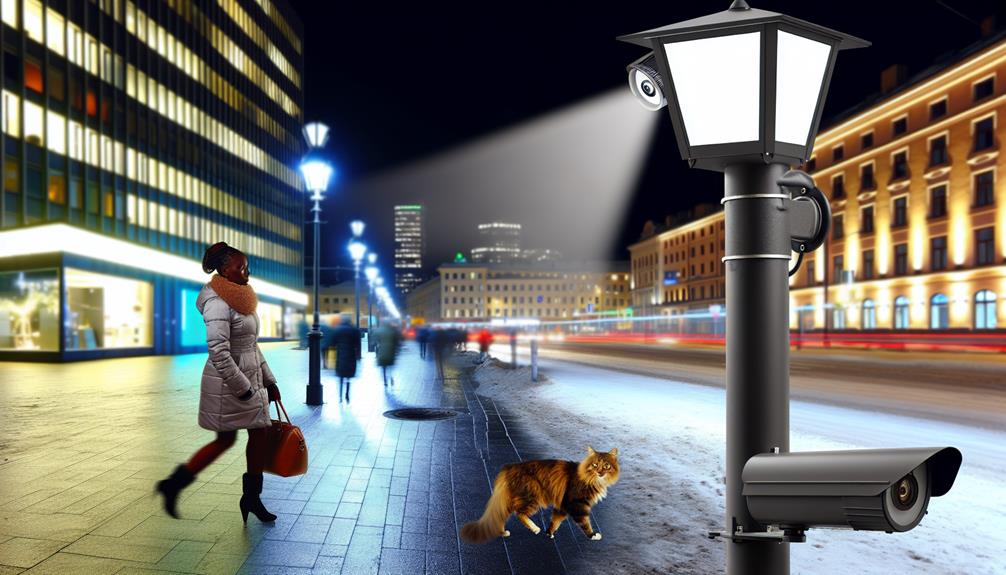
As high resolution motion detection cameras become more prevalent, it’s crucial to consider the privacy and legal implications these devices entail. You need to be aware of how these systems impact not just security but also the privacy of individuals.
Implementing robust data protection policies is essential. These should align with privacy impact assessments to ensure that the deployment of these cameras doesn’t infringe on user privacy rights unnecessarily.
You must also adhere to strict consent requirements, especially in public spaces where the balance between security and personal privacy can be particularly sensitive. It’s your responsibility to engage with the community to develop ethical surveillance practices that respect everyone’s digital rights.
Transparency is key here; you should establish clear surveillance transparency standards and make them accessible to everyone affected.
Understanding the legal implications is non-negotiable. This involves staying updated with public space regulations and ensuring all surveillance activities are legally compliant.
Engaging in community engagement strategies can help mitigate potential legal and ethical issues. Moreover, enhancing digital rights awareness among users and stakeholders can foster a more informed and accepting environment for the deployment of these advanced technologies.
The landscape of surveillance technology is rapidly evolving, and you’re likely to see some groundbreaking innovations in the near future.
As you navigate this shifting terrain, you’ll find that the integration of advanced technologies isn’t just enhancing security but also transforming how you interact with the systems.
Here’s what’s on the horizon:
As technology advances, it’s crucial to stay informed about privacy regulations to ensure compliance and protect individual rights.
You’re likely wondering about the durability of your equipment.
Typically, the lifespan of cameras hinges on several factors, including technology advancements and exposure to elements. Generally, you can expect your camera to last around 5 to 7 years.
However, with rapid improvements in camera technology, you might find performance diminishing as newer models emerge.
Regular maintenance and careful handling can maximize longevity, ensuring you get the most out of your investment.
Weather conditions can significantly impact your camera’s performance.
Extreme temperatures may cause it to malfunction or shut down completely. High humidity can also degrade its components over time, leading to reduced clarity and operational issues.
You’ll find that both temperature effects and humidity impact are crucial to consider if you want your equipment to last and function effectively, regardless of the specific type of camera or its intended use.
Yes, these devices can distinguish between animals and humans.
They’re equipped with advanced animal recognition and human detection capabilities.
This means when you set one up in your backyard or around your home, it can alert you differently depending on whether a raccoon or a person is prowling around.
This specificity helps in enhancing security measures and ensures that you’re informed correctly about the type of activity occurring in the monitored area.
Yes, there are wireless high-resolution motion detection cameras available.
You’ll find they’re quite versatile, especially if you’re aiming to monitor spaces without dealing with the hassle of wires.
When installing, ensure you place them high enough to avoid tampering but within your Wi-Fi range for optimal performance.
Look for models with strong battery life and ensure they’ve secure transmission capabilities to protect your data from unauthorized access.
To keep your equipment in top shape, regular maintenance is essential.
You’ll need to clean the lens periodically to ensure clear images. Dust and smudges can significantly impact quality.
Additionally, don’t forget to check for firmware updates. These updates can fix bugs and enhance camera functionality.
Make it a routine to inspect and maintain your gear, ensuring you’re always ready to capture everything with clarity and precision.
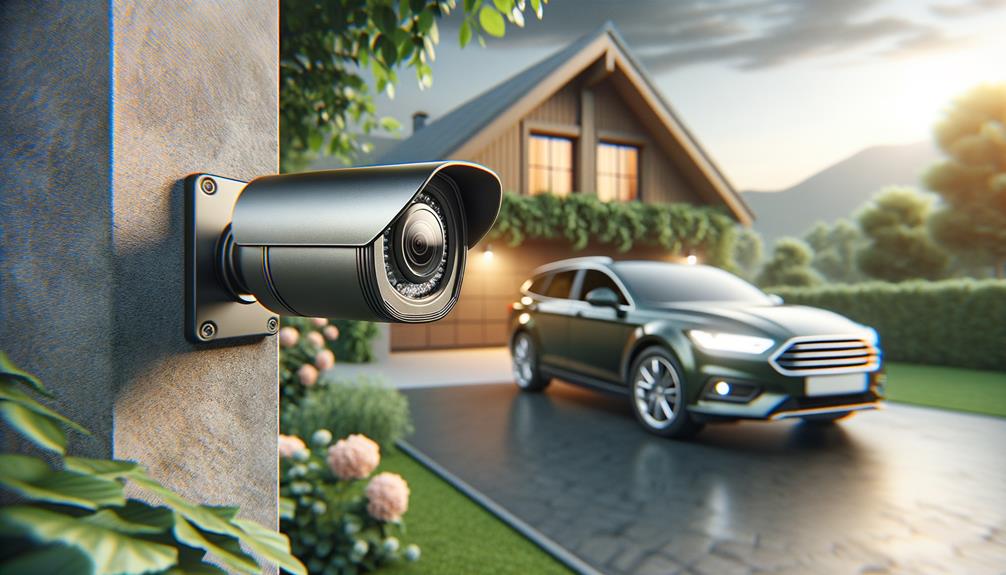
You’ve seen how high-resolution motion detection cameras are transforming security with their sharp images and reliable performance. By choosing the right model and following expert installation tips, you’ll maximize safety and budget efficiency. Remember, while embracing these advancements, it’s crucial to consider privacy laws to avoid legal issues. As technology evolves, stay informed about the latest trends to keep your security system effective and compliant. Invest wisely and ensure peace of mind with cutting-edge surveillance solutions.
Brainstorm Security Shop
1867 Caravan Trail
Ste 105
Jacksonville, FL 32216
Call us toll free: (800) 859-5566